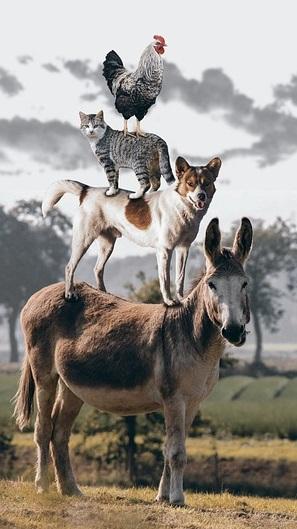FAQ

Where do I start?
Many times, folks have asked us how to get help establishing a farm or forested area that they have recently purchased or inherited. Or it may be that a producer wants to use the land in a new way. One of the most valuable resources that we can provide is the Conservation Plan. Our staff will make a plan of your farm for you FREE of charge. Staff will come out and talk to you and look at your farm. Then, we will map the land and show you what things you could do to make the best use of your land based on your goals. This is an invaluable service because it will help you see where you may need to make changes, add structures, or do things that will improve profitability. The plan is free, and you are not required to sign up for any of our programs or funding because you had one done. In addition to the Plan, our staff can give you advice on many things.
How do I obtain funding for something?
The first step is to contact our office and let us know that you are interested in obtaining funding for the specific project and ask for a Conservation Plan. A Conservation Plan tells you and our office what types of conservation projects need to be completed on your farm or land. You are not required to complete everything in the plan, but it lets you know all the practices that could benefit your farm or property. It also lets you and our office know if you have a need for the thing you are requesting or if there is something that would work better. With the exception of some NRCS funded projects, we can’t help you get funding without the Conservation Plan. But once you have one we can start looking at funding sources for which you may be qualified.


Why do I need a Nutrient Management Plan?
The law requires that most farms have a nutrient management plan. If you are exempt, then there is also a process to obtain an exemption. Neither the State nor Federal government will give money to farms that are not in compliance with the law.
What is an Animal Unit?
One animal unit is a 1000 lbs of animal weight. It would probably take only 8 full-sized cows to equal 8 animal units but it would take 2000 chickens. For some forms of funding, like MACS or CREP, a farm must have a certain number of animal units to qualify. But not all funding requires there to be animals on the farm.
What is cost-share?
Cost-share means you and the government share the funding. Many of our programs are cost-share programs. That means the government pays part through a grant and you pay part. Some cost-shares are 50/50, but others can be 80% grant and 20% you, or 90% grant and 10% you.
Will I get funded if I apply?
Applying does not guarantee funding. There are different requirements for different programs. You’ll need to meet all the eligibility requirements for the program for which you are applying, and you’ll need to submit all the documents requested. There are several types of funding:
- MACS – MACS is through the Maryland Department of Agriculture. You must have at least 1 animal unit. Funding is prorated based on the animal units, with farms with 15 animal units receiving the full amount of cost-share funding for the practice. MACS projects often require significant planning and design work, so the process is generally a lengthy one. Producers would first have a Conservation Plan done, then apply for practices listed on the plan. Depending on the project, our staff may need to do planning and design work. To get funded, the Producer would complete the project as designed. Once our office certifies that it is finished, the Producer would receive the cost-share funding stated in the contract.
- CREP – CREP is yearly payments that you would receive to plant and maintain a portion of your land in trees and bushes to provide a buffer for streams. CREP is handled by FSA with federal funding.
- Maryland Buffer Initiative – The Maryland Buffer Initiative is similar to CREP, but the payments are made by the State of Maryland rather than the USDA. There are some differences in the requirements and payments, so those interested should talk to our staff to compare CREP and the Maryland Buffer Initiative before applying.
- EQIP – EQIP is federal USDA funding. Only so much is allotted for the county per year, so not everyone gets funded. Applications are ranked. Currently, there is a temporary boost in funding, so many more projects are being funded than normal. Some EQIP projects do not require a Conservation Plan. Applicants would simply apply for funding for the particular project by coming in to our office. Some projects covered by EQIP that do not need a Conservation Plan include: high tunnels (if no water help is needed), fencing, energy audits, grazing, forestry, troughs, and pipes.
- MDA Cover Crop and Manure Transport – You must sign up during the enrollment period each year. If you qualify and complete everything, you will be funded.


Do I have to own the property that I am farming to get funding?
Not necessarily. There are programs that provide funding to farmers that work the land even if someone else owns it. Each program has its own guidelines. Often the owner will have to approve the application, particularly if it involves a structure placed on the land.
Do I have to pay for the cost of the structure first and be reimbursed or do I get the money before I build?
That depends upon the program. Be sure to ask that question of our staff when you apply for funding for a particular practice.
As a general rule, most of the time, you will have to pay first, and once the practice is in place, you will be reimbursed the cost-share amount. In some cases, you can request to receive a portion of the funding before the practice is installed. But you do need to request it to receive this service.
If you are considered to be Historically Underserved or low income there are some programs that will allow you to be paid first.
How long will it take for me to get approved for a particular project?
That is an impossible question for us to answer here. It depends on the project and the funding source. Some projects are funded less than a year from application, others take years. Some are not funded at all. Staff members can tell you more once you have your Conservation Plan and you are looking at funding for a particular practice. Structures that require a lot of planning and design work will take longer than something like forestry.
Will I be fined if I don’t do everything on the Conservation Plan?
Definitely, not by our office. We are not a regulating body, and we have no desire to “report” you to anyone. We’re only interested in helping you conserve your land if you want to conserve it. The Conservation Plan is for you to know about practices and structures that will help your farm. Conservation Plans often outline things that we have grant programs to cover. So, for instance, if we tell you it would help you to have a waste storage structure, we can also tell you about funding sources and if they could potentially help you pay for it.
However, there are some governmental groups that would fine you for having a conservation problem on your land that you are not in the process of fixing. We don’t report anything we find on your farm to those agencies, but they often send out representatives to check farms, and if they catch you; you may need to fix the problem without funding help and pay a fine too.


If I accept funding will the government be able to control, or take, my land?
There are a lot of these rumors out there, and it makes us sad, because farmers who could have funding for things they need are sometimes afraid to apply. These rumors are not true. Grant funding does not have to be repaid, and it does not give the government any type of lien on your property.
Some of the rumors have stemmed from the MALPF program. The MALPF (also known as Land Preservation) program buys the development rights of property so that it can never be used for anything but agricultural purposes. Landowners are fully aware that they are selling their development rights when they sign the contract and accept the payment. Generally farmers enter into MALPF because they do not ever want their land to be used for anything but agriculture. So, sometimes the negativity about the program actually comes from developers that are unhappy that they cannot buy a particular large parcel.
We don’t deal with MALPF in our office, other than to write the required Conservation Plans free for producers when they request them, but we do assist with the FSA program CREP, which pays rental payments for land for a certain period of time. Most of the funding we work with in our office does not place any stipulations on the use of your land. And if it is a program, like CREP, that does, that will be made clear to you before you sign anything.
Why would the Soil Conservation District want to help me pay for things on my farm?
Back when the Soil Conservation District was created, it was determined that the best way to go about conserving the soil and water was to become a partner to the landowner. We believe farmers and landowners want to conserve their land. What is stopping them is often expertise and funding. So, that’s what we provide. If someone doesn’t have the resources to do something, it makes no sense to levy fines if it is not done. That does nothing. We consider ourselves a friend to the farmer and landowner, and we work hard to help our local farmers and landowners obtain as much funding as possible to complete conservation practices on their land. It’s your land. We have no desire to tell you how to use it. But if you want to protect your soil and water, we can give you advice and maybe help you obtain funding, if you qualify, for practices and structures that you need to conserve your soil and water.
Can I get my field tiled?
The State no longer provides grants for the tiling of fields because it encourages the retention of wetlands. However, if you have a field that has been tiled previously, and it is in need of repair, there are some other practices that can be done. A pipe can be run above the tile that will collect the water and move it away from the surface. Although there is some funding for this, it is more difficult to obtain. Please contact our office for more information but be aware that this may be a practice you will have to complete yourself.


I bought some land that was previously strip-mined. How do I make it into a farm?
Strip-mined land can be difficult. Often crops will not grow well on the land, making it useless for producing food crops or hay. CREP or the Maryland Buffer Initiative may be good options for use of the land. Although this is a generalization of strip-mined land, not every property is the same. So, we recommend having a Conservation Plan done. That will give you a good overview of your specific property.